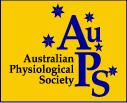

|
| Sunday 29th November 2015 | |||||||||||||||||||||||||||
| MS1 | MS2 | Rm 158 | |||||||||||||||||||||||||
| 13:00 |
Education workshop: Designing assessments in physiology
Chairs: Yvonne Hodgson & Joel Michael
|
||||||||||||||||||||||||||
| 13:30 | |||||||||||||||||||||||||||
| 14:00 | |||||||||||||||||||||||||||
| 14:30 | |||||||||||||||||||||||||||
| 15:00 | |||||||||||||||||||||||||||
| 15:30 | |||||||||||||||||||||||||||
| 16:00 | |||||||||||||||||||||||||||
| 16:30 | |||||||||||||||||||||||||||
| 17:00 |
Registration
Location: Foyer |
||||||||||||||||||||||||||
| 17:30 |
Opening ceremony - AuPS Invited Lecture
Chair: Graham Lamb
|
||||||||||||||||||||||||||
| 18:00 | |||||||||||||||||||||||||||
| 18:30 | |||||||||||||||||||||||||||
| Welcome reception | |||||||||||||||||||||||||||
| 19:00 | |||||||||||||||||||||||||||
| 19:30 | |||||||||||||||||||||||||||
| 20:00 | |||||||||||||||||||||||||||
| 20:30 | |||||||||||||||||||||||||||
| 21:00 | |||||||||||||||||||||||||||
| 21:30 | |||||||||||||||||||||||||||
| Monday 30th November 2015 | ||||||||||||||||||||||||||||||||||||||||||||||||||||||||||||||||||||||||||||||||||||||||||||||||||||||||||||||||||
| MS1 | MS2 | Rm 158 | ||||||||||||||||||||||||||||||||||||||||||||||||||||||||||||||||||||||||||||||||||||||||||||||||||||||||||||||||
| 08:30 |
Free communications: Muscle wasting disease
Chairs: Severine Lamon & Jessica Terrill
|
Free communications: Muscle and vascular
Chairs: Steve Richards & Tim Murphy
|
Symposium: Education symposium: What do we want our physiology graduates to know and be able to do? Chair: Yvonne Hodgson
|
|||||||||||||||||||||||||||||||||||||||||||||||||||||||||||||||||||||||||||||||||||||||||||||||||||||||||||||||
| 09:00 | ||||||||||||||||||||||||||||||||||||||||||||||||||||||||||||||||||||||||||||||||||||||||||||||||||||||||||||||||||
| 09:30 | ||||||||||||||||||||||||||||||||||||||||||||||||||||||||||||||||||||||||||||||||||||||||||||||||||||||||||||||||||
| 10:00 | ||||||||||||||||||||||||||||||||||||||||||||||||||||||||||||||||||||||||||||||||||||||||||||||||||||||||||||||||||
| 10:30 | Morning tea | |||||||||||||||||||||||||||||||||||||||||||||||||||||||||||||||||||||||||||||||||||||||||||||||||||||||||||||||||
| 11:00 |
Symposium: Sex-specific effects of programming: how your gender plays a role in determining your disease risk Chair: Deanne Hryciw
|
Symposium: Stem cells & regenerative medicine Chairs: James Ryall & Aaron Russell
|
Free communications: Drugs and channels
Chair: David Adams
|
|||||||||||||||||||||||||||||||||||||||||||||||||||||||||||||||||||||||||||||||||||||||||||||||||||||||||||||||
| 11:30 | ||||||||||||||||||||||||||||||||||||||||||||||||||||||||||||||||||||||||||||||||||||||||||||||||||||||||||||||||||
| 12:00 | ||||||||||||||||||||||||||||||||||||||||||||||||||||||||||||||||||||||||||||||||||||||||||||||||||||||||||||||||||
| 12:30 | ||||||||||||||||||||||||||||||||||||||||||||||||||||||||||||||||||||||||||||||||||||||||||||||||||||||||||||||||||
| 13:00 | Lunch | |||||||||||||||||||||||||||||||||||||||||||||||||||||||||||||||||||||||||||||||||||||||||||||||||||||||||||||||||
| 13:30 | ||||||||||||||||||||||||||||||||||||||||||||||||||||||||||||||||||||||||||||||||||||||||||||||||||||||||||||||||||
|
Roberts Lecture
Chair: Graham Lamb
|
||||||||||||||||||||||||||||||||||||||||||||||||||||||||||||||||||||||||||||||||||||||||||||||||||||||||||||||||||
| 14:00 | ||||||||||||||||||||||||||||||||||||||||||||||||||||||||||||||||||||||||||||||||||||||||||||||||||||||||||||||||||
|
Free communications: Disease and signalling/muscle
Chairs: Craig Goodman & Sanket Joshi
|
Free communications: Exercise Physiology/Metabolism
Chairs: Xu Yan & Nigel Taylor
|
|||||||||||||||||||||||||||||||||||||||||||||||||||||||||||||||||||||||||||||||||||||||||||||||||||||||||||||||||
| 14:30 | ||||||||||||||||||||||||||||||||||||||||||||||||||||||||||||||||||||||||||||||||||||||||||||||||||||||||||||||||||
| 15:00 | ||||||||||||||||||||||||||||||||||||||||||||||||||||||||||||||||||||||||||||||||||||||||||||||||||||||||||||||||||
| 15:30 | ||||||||||||||||||||||||||||||||||||||||||||||||||||||||||||||||||||||||||||||||||||||||||||||||||||||||||||||||||
| 16:00 |
Posters and afternoon tea
Odd poster board authors in attendence.
|
|||||||||||||||||||||||||||||||||||||||||||||||||||||||||||||||||||||||||||||||||||||||||||||||||||||||||||||||||
| 16:30 | ||||||||||||||||||||||||||||||||||||||||||||||||||||||||||||||||||||||||||||||||||||||||||||||||||||||||||||||||||
| 17:00 | ||||||||||||||||||||||||||||||||||||||||||||||||||||||||||||||||||||||||||||||||||||||||||||||||||||||||||||||||||
| 17:30 |
Plenary Lecture
Chair: Matthew Watt
|
|||||||||||||||||||||||||||||||||||||||||||||||||||||||||||||||||||||||||||||||||||||||||||||||||||||||||||||||||
| 18:00 | ||||||||||||||||||||||||||||||||||||||||||||||||||||||||||||||||||||||||||||||||||||||||||||||||||||||||||||||||||
| 18:30 | ||||||||||||||||||||||||||||||||||||||||||||||||||||||||||||||||||||||||||||||||||||||||||||||||||||||||||||||||||
| 19:00 | ||||||||||||||||||||||||||||||||||||||||||||||||||||||||||||||||||||||||||||||||||||||||||||||||||||||||||||||||||
| 19:30 |
ECR & Student Event
Location: Brunswick Hotel |
|||||||||||||||||||||||||||||||||||||||||||||||||||||||||||||||||||||||||||||||||||||||||||||||||||||||||||||||||
| 20:00 | ||||||||||||||||||||||||||||||||||||||||||||||||||||||||||||||||||||||||||||||||||||||||||||||||||||||||||||||||||
| 20:30 | ||||||||||||||||||||||||||||||||||||||||||||||||||||||||||||||||||||||||||||||||||||||||||||||||||||||||||||||||||
| 21:00 | ||||||||||||||||||||||||||||||||||||||||||||||||||||||||||||||||||||||||||||||||||||||||||||||||||||||||||||||||||
| 21:30 | ||||||||||||||||||||||||||||||||||||||||||||||||||||||||||||||||||||||||||||||||||||||||||||||||||||||||||||||||||
| 22:00 | ||||||||||||||||||||||||||||||||||||||||||||||||||||||||||||||||||||||||||||||||||||||||||||||||||||||||||||||||||
| 22:30 | ||||||||||||||||||||||||||||||||||||||||||||||||||||||||||||||||||||||||||||||||||||||||||||||||||||||||||||||||||
| Tuesday 1st December 2015 | |||||||||||||||||||||||||||||||||||||||||||||||||||
| MS1 | MS2 | Rm 158 | |||||||||||||||||||||||||||||||||||||||||||||||||
| 08:30 |
Symposium: Cardiovascular metabolo-pathology Chair: Kimberley Mellor
|
Symposium: Novel mechanisms that regulate the physiological attributes of muscle Chair: Paul Gregorevic
|
Free communications: Signal transduction/skeletal muscle
Chairs: Nicole Beard & Noni Frankenberg
|
||||||||||||||||||||||||||||||||||||||||||||||||
| 09:00 | |||||||||||||||||||||||||||||||||||||||||||||||||||
| 09:30 | |||||||||||||||||||||||||||||||||||||||||||||||||||
| 10:00 | |||||||||||||||||||||||||||||||||||||||||||||||||||
| 10:30 | Morning tea | ||||||||||||||||||||||||||||||||||||||||||||||||||
| 11:00 |
Symposium: Physiological mechanisms controlling microvascular flow and muscle metabolism Chair: Steve Rattigan
|
Symposium: The sarcoplasmic reticulum of skeletal muscle Chair: Bradley Launikonis
|
Pregnancy and fetal physiology
Chair: James Cuffe
|
||||||||||||||||||||||||||||||||||||||||||||||||
| 11:30 | |||||||||||||||||||||||||||||||||||||||||||||||||||
| 12:00 | |||||||||||||||||||||||||||||||||||||||||||||||||||
| 12:30 | |||||||||||||||||||||||||||||||||||||||||||||||||||
| 13:00 |
Lunch and Posters
See Monday for list. Even board authors in attendance. |
Student and ECR Lunchtime Discussion: Life, Balance and Gender Issues | |||||||||||||||||||||||||||||||||||||||||||||||||
| 13:30 | |||||||||||||||||||||||||||||||||||||||||||||||||||
| 14:00 | |||||||||||||||||||||||||||||||||||||||||||||||||||
| 14:30 | |||||||||||||||||||||||||||||||||||||||||||||||||||
| 15:00 |
Symposium: Controlling the excitable heart Chair: Livia Hool
|
Symposium: New insights into exercise-induced mitochondrial adaptations Chair: David Bishop
|
Free communications: Muscle growth/development
Chairs: Emma Rybalka & Gavin Pinniger
|
||||||||||||||||||||||||||||||||||||||||||||||||
| 15:30 | |||||||||||||||||||||||||||||||||||||||||||||||||||
| 16:00 | |||||||||||||||||||||||||||||||||||||||||||||||||||
| 16:30 | |||||||||||||||||||||||||||||||||||||||||||||||||||
| 17:00 | |||||||||||||||||||||||||||||||||||||||||||||||||||
| 17:30 | |||||||||||||||||||||||||||||||||||||||||||||||||||
| 18:00 | |||||||||||||||||||||||||||||||||||||||||||||||||||
| 18:30 | 18:15 Ferry to Mona; Dinner; Midnight Ferry to city | ||||||||||||||||||||||||||||||||||||||||||||||||||
| 19:00 | |||||||||||||||||||||||||||||||||||||||||||||||||||
| 19:30 | |||||||||||||||||||||||||||||||||||||||||||||||||||
| 20:00 | |||||||||||||||||||||||||||||||||||||||||||||||||||
| 20:30 | |||||||||||||||||||||||||||||||||||||||||||||||||||
| 21:00 | |||||||||||||||||||||||||||||||||||||||||||||||||||
| 21:30 | |||||||||||||||||||||||||||||||||||||||||||||||||||
| 22:00 | |||||||||||||||||||||||||||||||||||||||||||||||||||
| 22:30 | |||||||||||||||||||||||||||||||||||||||||||||||||||
| Wednesday 2nd December 2015 | |||||||||||||||||||||||||||||||||||||||||||||||||||
| MS1 | MS2 | Rm 158 | |||||||||||||||||||||||||||||||||||||||||||||||||
| 09:00 |
Symposium: Lipid metabolism in health & disease - novel techniques to assess lipids Chair: Matthew Watt
|
Symposium: Linking mitochondria with health and disease Chairs: Nigel Tuner & Sean McGee
|
|||||||||||||||||||||||||||||||||||||||||||||||||
| 09:30 | |||||||||||||||||||||||||||||||||||||||||||||||||||
| 10:00 | |||||||||||||||||||||||||||||||||||||||||||||||||||
| 10:30 | |||||||||||||||||||||||||||||||||||||||||||||||||||
| 11:00 | Morning tea | ||||||||||||||||||||||||||||||||||||||||||||||||||
| 11:30 |
Symposium: Age, sex and cardiovascular protection strategies Chair: Jim Bell
|
Symposium: SERCA and NaK properties and regulation in skeletal muscle Chair: Graham Lamb
|
Free communications: Exercise adaptation
Chairs: Victoria Wyckelsma & Aaron Petersen
|
||||||||||||||||||||||||||||||||||||||||||||||||
| 12:00 | |||||||||||||||||||||||||||||||||||||||||||||||||||
| 12:30 | |||||||||||||||||||||||||||||||||||||||||||||||||||
| 13:00 | |||||||||||||||||||||||||||||||||||||||||||||||||||
| 13:30 | Lunch | ||||||||||||||||||||||||||||||||||||||||||||||||||
| 14:00 |
Student Prizes and AGM
Chair: Graham Lamb |
||||||||||||||||||||||||||||||||||||||||||||||||||
| 14:30 | |||||||||||||||||||||||||||||||||||||||||||||||||||
Administration access - requires authorisation
|
Copyright © 1996-2025 AuPS Inc. Last updated 9 December 2018.
Comments or questions on the content of this site should be directed to the Secretary, AuPS. Technical problems should be referred to the Webmaster Privacy Policy |

|